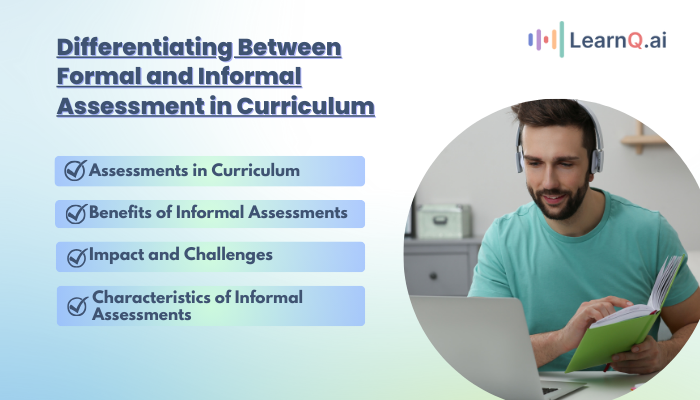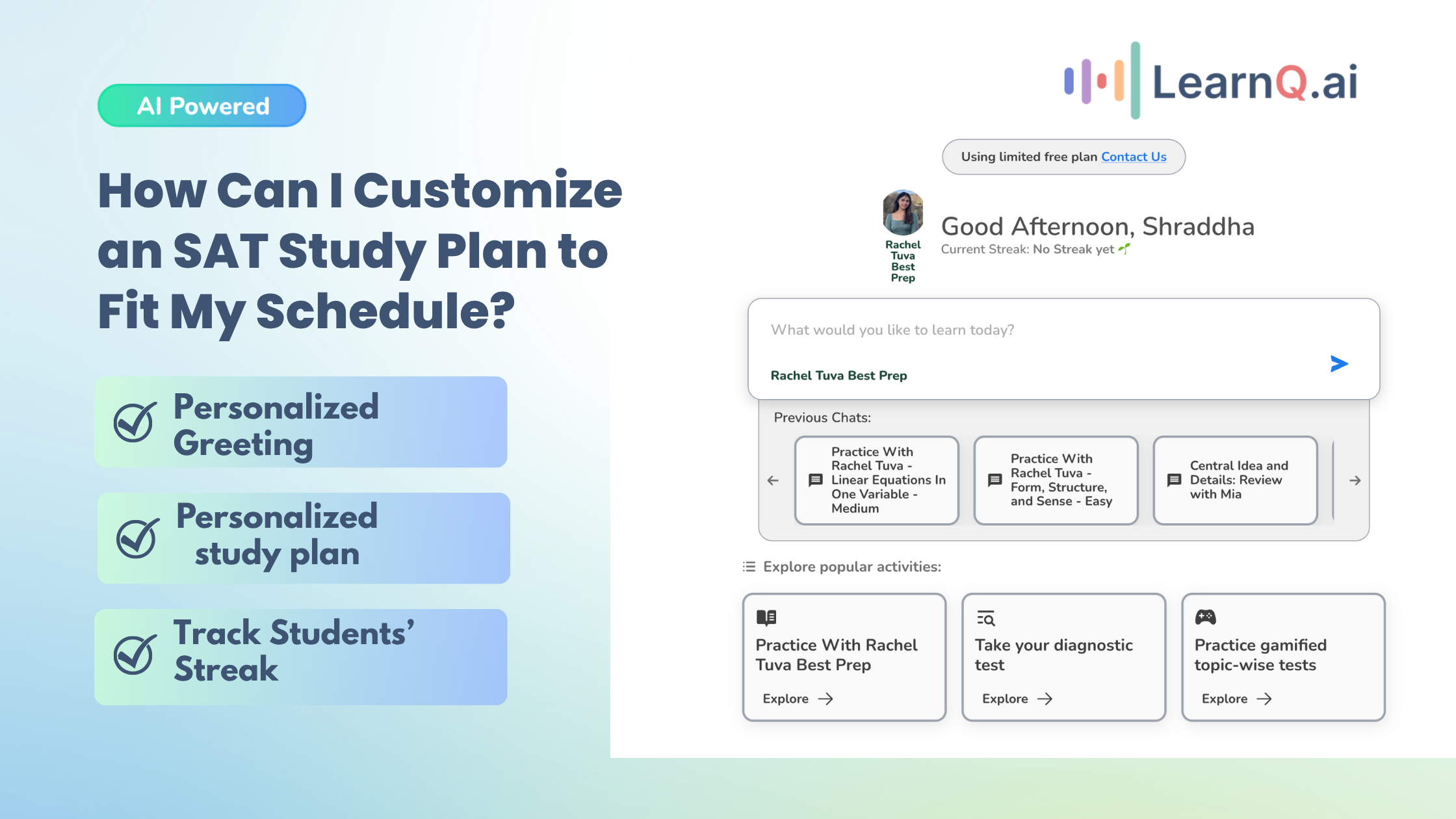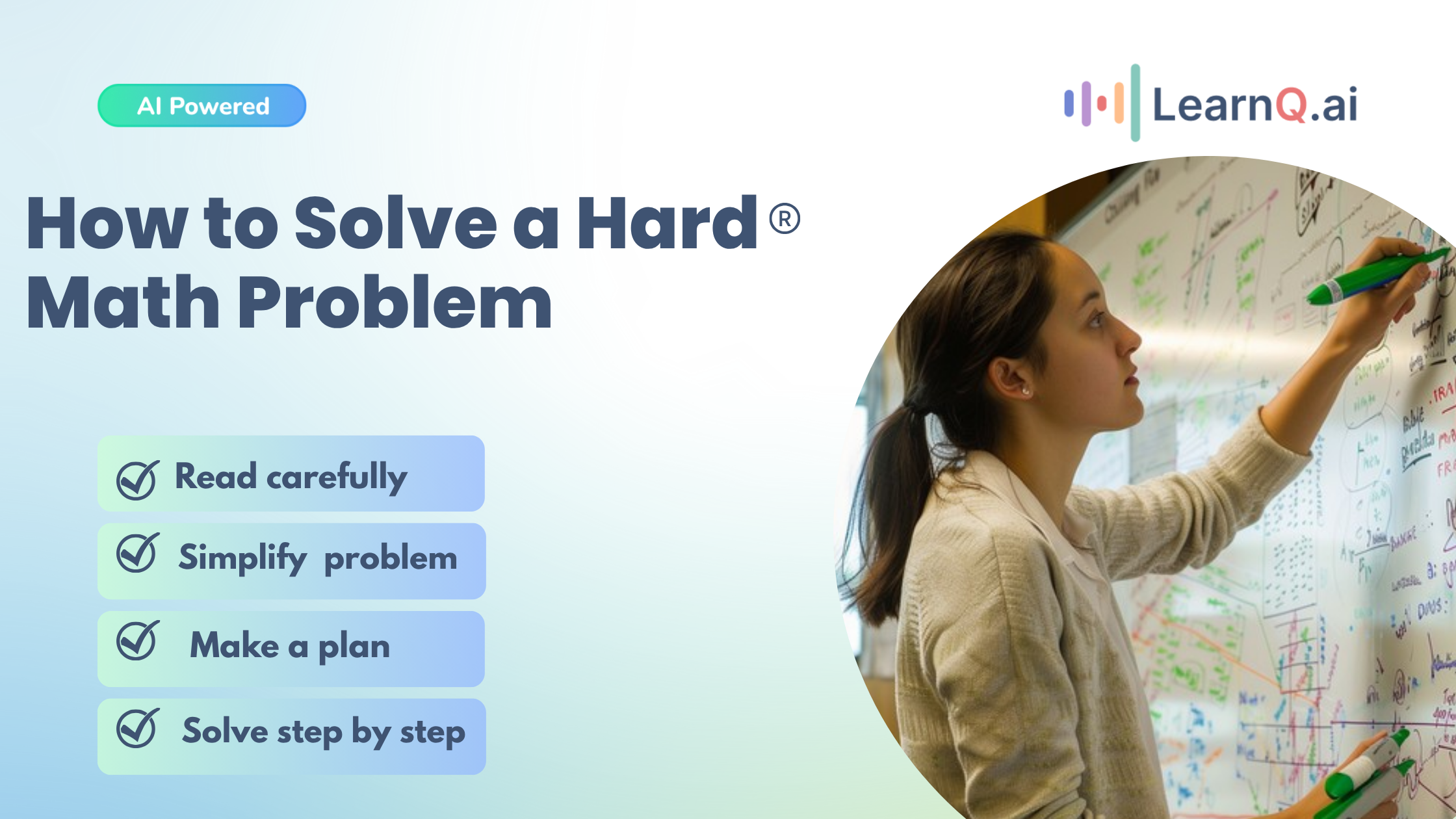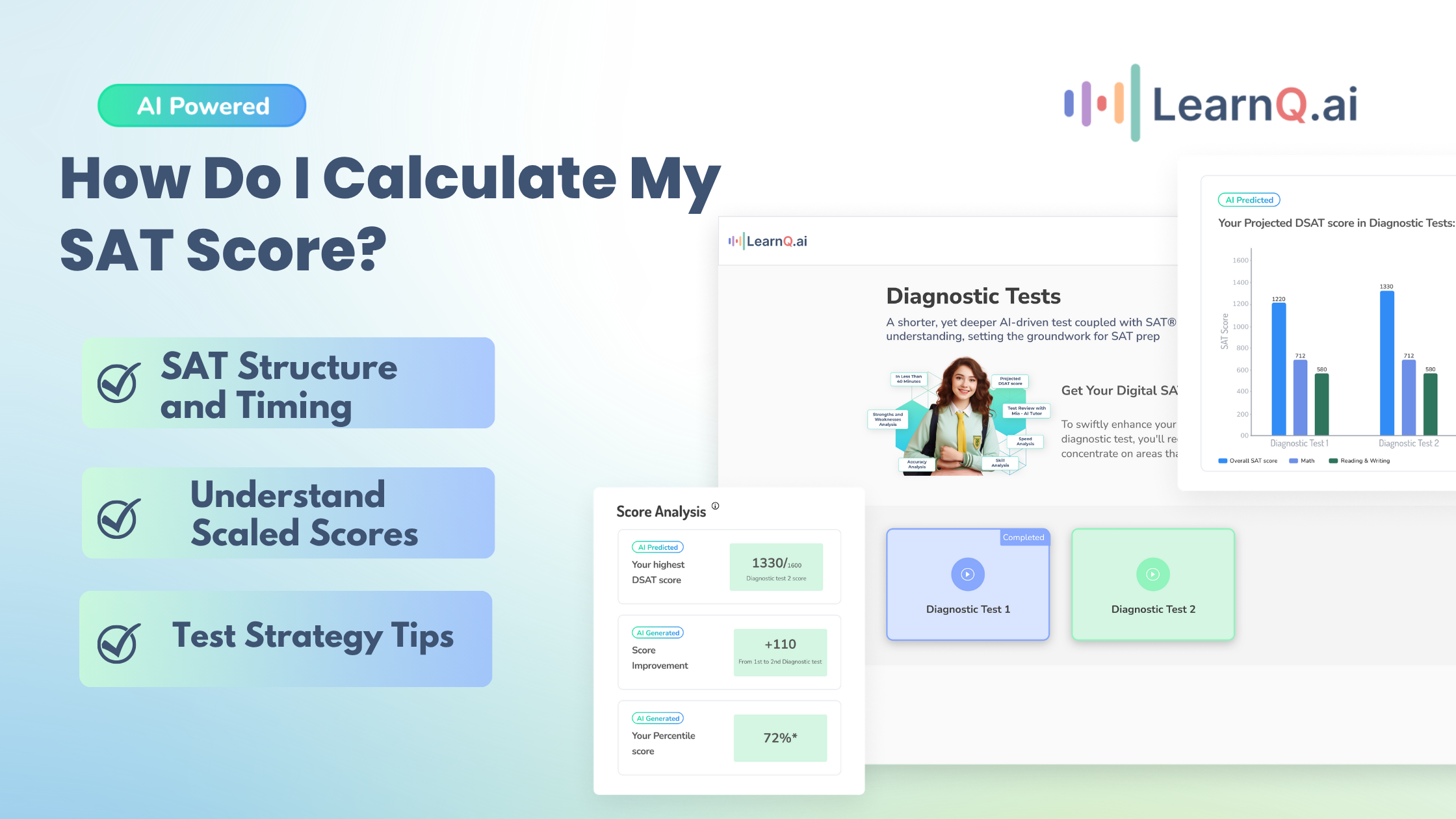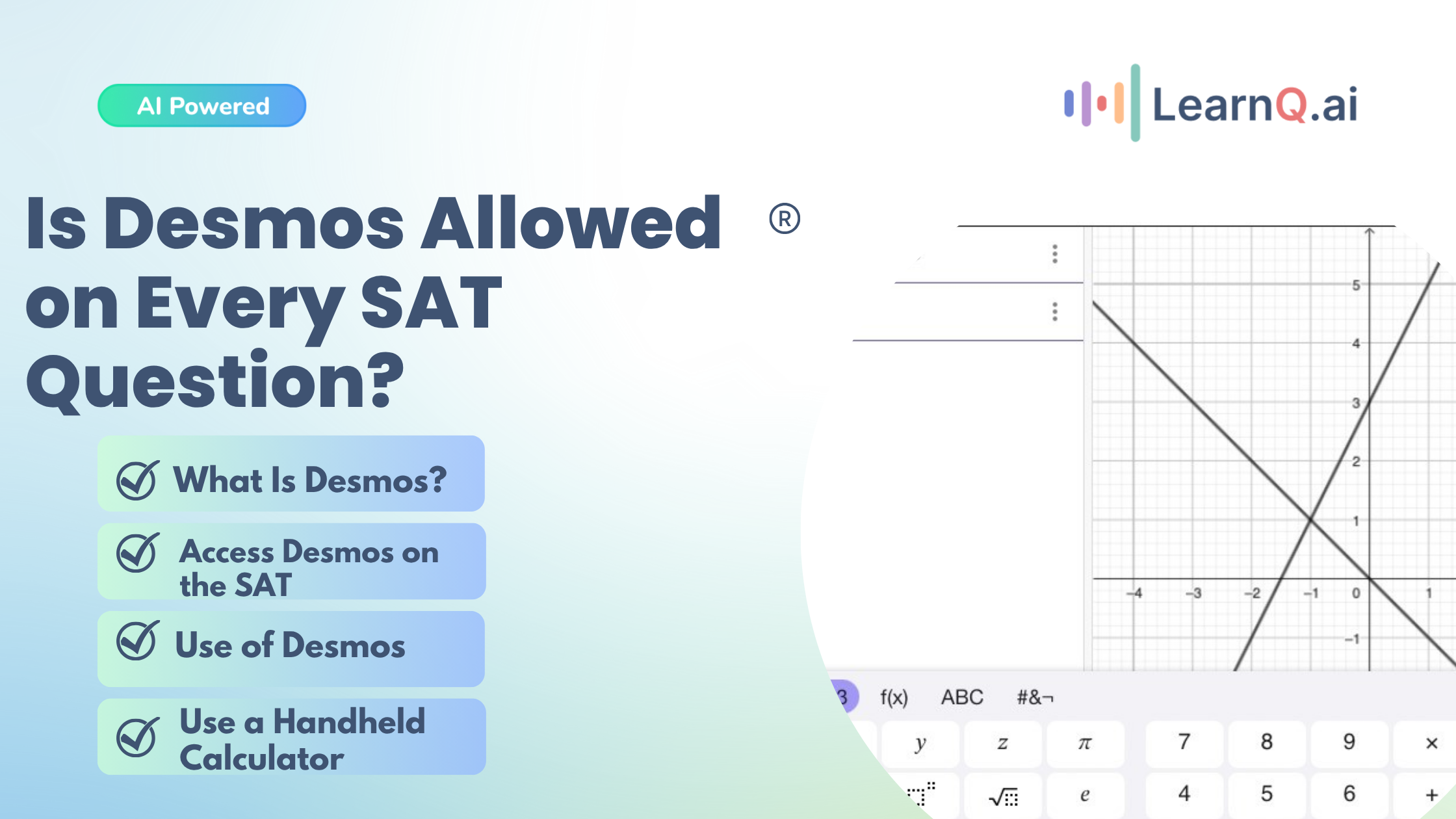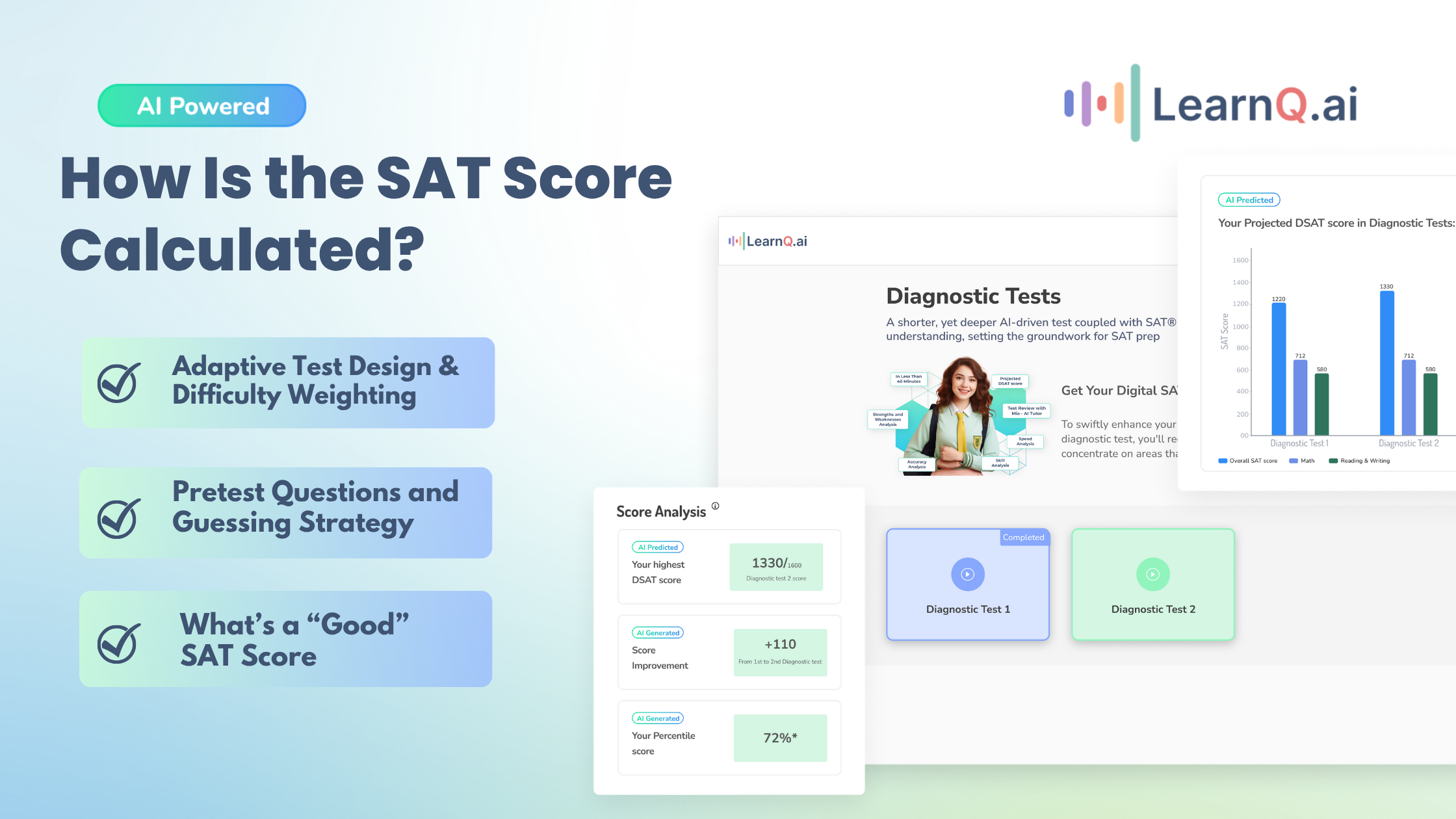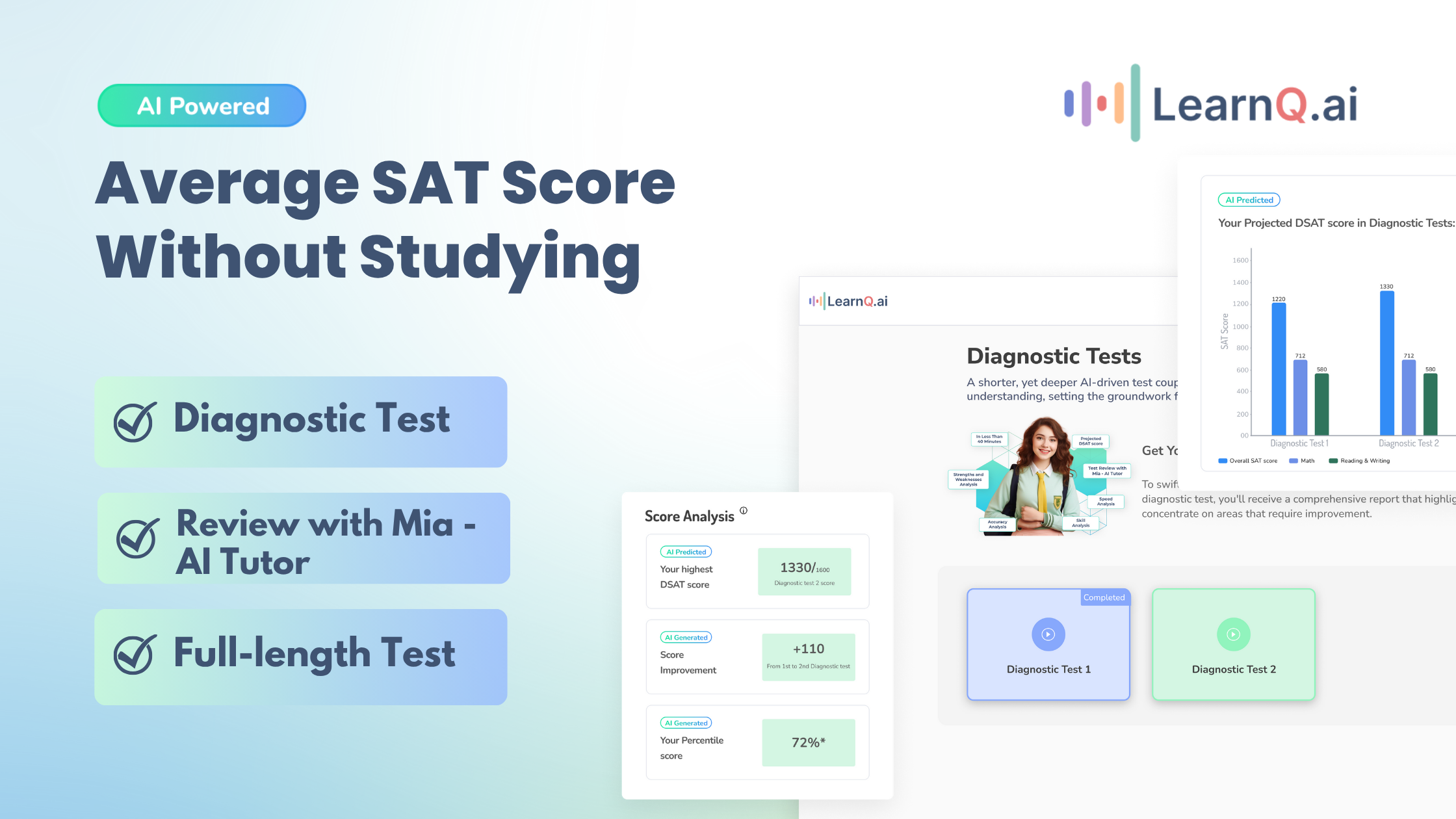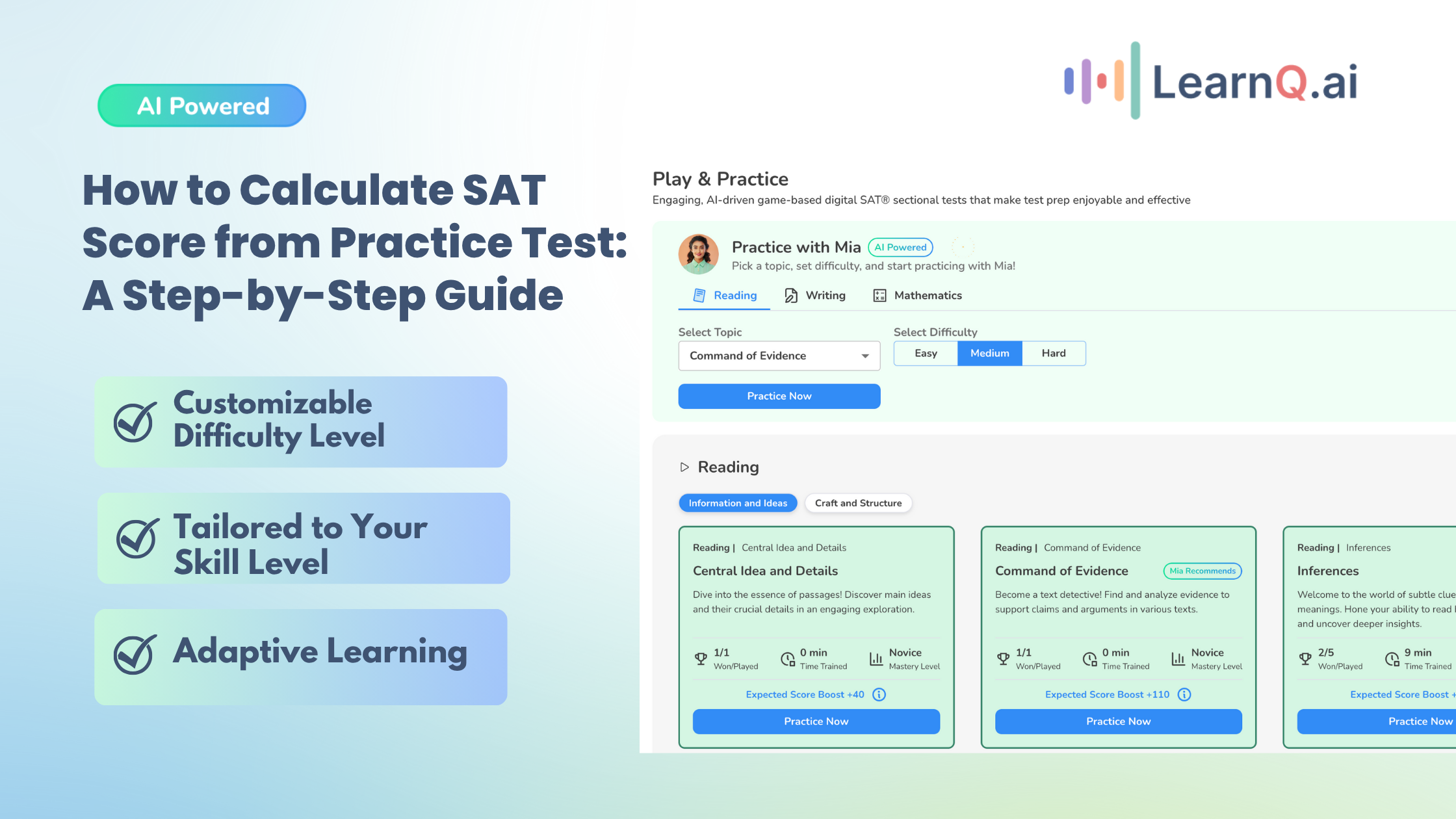Assessments do more than just measure your knowledge. They actively influence the curriculum and impact overall educational outcomes. Whether it’s a high-stakes exam or a quick class discussion, assessments help teachers decide what and how to teach. Assessments can be broadly categorized into formal and informal.
Formal assessments are structured, like standardized tests. On average, across OECD countries, one in four schools for 15-year-old students never uses these tests, while three in five schools administer them only once or twice a year. These tests are designed to measure student achievement on a large scale.
LearnQ.ai is Powered by VEGA AI—Is your Institute Next?
Give students a Duolingo-style test-prep platform with Shopify-level customization for tutors and institutes.
On the other hand, informal assessments, which include teacher observations or quick exit tickets, are woven into everyday classroom activities. These are to provide immediate feedback and adjust instruction.
But why are both types of assessments significant, and how do they complement each other in creating an effective learning environment? Dive into how formal and informal assessments play a pivotal role in shaping academic success for students, teachers, and parents alike.
Characteristics of Formal Assessments
When you think of exams that come with set rules, grading rubrics, and official reports, you’re picturing formal assessments. These assessments are designed to provide a consistent and standardized measure of student performance, often carrying significant weight in academic settings.
Read on to see what sets these structured evaluations apart and why they’re a fundamental part of education.
- Purpose and Scope
Formal assessments are structured tools used to evaluate student learning and measure academic achievement. Here’s how they serve their purpose and scope effectively:
- Evaluating Outcomes: These assessments determine if educational goals are met, providing a benchmark for student performance.
- Measuring Knowledge: They test understanding across a broad range of material to ensure comprehensive subject mastery.
- Standardized Metrics: Results are used for consistent comparisons between students, schools, or districts.
- Accountability: They hold educators and institutions accountable for meeting curriculum standards and reporting progress.
- Structured Implementation
Formal assessments are designed with a structured approach to ensure fairness and consistency, making them effective for measuring proficiency on a standardized scale. Here are key aspects of their implementation:
- Uniform Procedures: These are administered in the same way so that all students can provide equal assessment conditions.
- Clear Scoring Criteria: Uses specific rubrics or guides to evaluate performance objectively.
- Standardized Content: Focuses on curriculum-aligned material to ensure consistency in what is assessed.
- Comparability: Allows performance comparison across different groups or demographics to spot trends.
- Data-Driven Insights: Provides quantitative data to guide educational strategies and decision-making.
- Common Examples
Here’s a look at common examples of formal assessment methods.
| Example | Description |
| Structured Projects | Long-term assignments with specific guidelines and grading rubrics, like research papers or science fair projects. |
| Final Evaluations | Cumulative tests or comprehensive exams are given at the end of a course to assess overall understanding of the material. |
| Written Exams | Formal tests, including essays or multiple-choice questions, follow a consistent format. |
| Oral Presentations | Assessed with a rubric to evaluate clarity, content, and delivery in a structured setting. |
| Standardized Tests | Exams like the SAT, ACT, or state assessments are used to compare student performance nationally or statewide. |
Also read: Digital SAT Mastery with LearnQ.ai: The Ultimate Tool for Students and Teachers.
Enhance your Digital SAT study routine with AI-driven insights and personalized practice tests.
Characteristics of Informal Assessments
Imagine a teacher observing students during a group activity or asking questions in a class discussion to check for understanding. These are examples of informal assessments, unstructured and often ungraded ways to measure learning on the spot. Unlike formal tests, these assessments provide instant feedback and allow teachers to adapt their lessons in real-time. Get into what makes informal assessments so valuable in the classroom.
- Flexible and Dynamic
Informal assessments are powerful tools that thrive on flexibility and adaptability, making them ideal for measuring student progress in real-time. Unlike rigid, formal exams, they are content-driven and designed to respond to the unique needs of each learning environment.
Here’s how they work:
- Content-Driven: Focuses on real-time understanding and application, allowing teachers to adjust lessons based on immediate student feedback.
- Performance-Based: Evaluates practical skills and active participation, like monitoring a student during a group project or discussion.
- Adaptable Across Settings: Works seamlessly in various environments, from traditional classrooms to virtual spaces, and supports both group and individual activities.
- Instant Feedback: Provides students with immediate guidance, enhancing engagement and helping them improve on the spot.
- Student-Centered: Tailors learning experiences to individual strengths and areas of improvement, promoting a supportive and personalized approach.
- Unstructured Format
Informal assessments thrive on flexibility, seamlessly fitting into the flow of daily educational activities. Their unstructured nature allows teachers to use them spontaneously, whether through class discussions, quick quizzes, or simple observations.
This approach lets educators assess student understanding in real time and adapt their teaching methods on the fly. The lack of rigid guidelines also means these assessments can be easily tailored to fit the unique dynamics of any classroom, making learning more interactive and responsive.
- Practical Examples
Informal assessments are often integrated into everyday classroom activities, providing valuable insights into student learning without the pressure of formal exams. These strategies are practical, interactive, and adaptable, making them perfect for gauging understanding on the go. Here are some compelling examples:
- Classroom Observations: Teachers observe students as they work, assessing engagement, comprehension, and problem-solving skills.
- Ongoing Feedback: Real-time comments during lessons help students make immediate adjustments and reinforce their understanding.
- Participatory Class Activities: Methods like group discussions, think-pair-share exercises, and interactive Q&A sessions keep students engaged and give teachers a clear picture of class-wide comprehension.
- Exit Tickets: Quick reflections at the end of a lesson provide insight into what students have learned and any areas they may still struggle with.
- Peer Reviews: Students evaluate each other’s work, fostering collaboration and a deeper understanding of the material.
Benefits of Informal Assessments
Informal assessments offer a range of advantages that make them a crucial component of effective teaching and learning. These methods not only provide immediate feedback but also foster an engaging and adaptive learning environment.
Check out some of their key benefits in detail.
- Immediate Feedback for Better Learning
One of the biggest advantages of informal assessments is the opportunity for instant feedback. Teachers can address misconceptions as they arise, helping students correct errors and understand concepts on the spot.
This real-time guidance keeps students motivated and ensures that learning is continuous and effective.
- Enhanced Engagement and Participation
Informal assessments are often interactive, like group discussions or class debates, which encourage active student involvement. When students are engaged, they are more likely to retain information and develop a deeper understanding of the subject matter. This hands-on approach makes learning enjoyable and relevant.
- Adaptability to Student Needs
Teachers can easily tailor informal assessments to meet the diverse needs of their students. Whether it’s adjusting questions to a student’s skill level or varying activities to keep students interested, this flexibility supports personalized learning. It ensures that every student can progress at their own pace.
- Promotes a Low-Stress Learning Environment
Unlike formal tests, informal assessments are typically low-pressure. They allow students to demonstrate their understanding without the anxiety that often accompanies exams. This relaxed atmosphere makes it easier for students to engage and learn, contributing to better overall academic performance.
- Preparation for Formal Assessments
Informal tests can be strategically scheduled to help students prepare for high-stakes formal assessments. LearnQ’s play and practice tests offer a fun and stress-free way to reinforce knowledge and build confidence.
These practice sessions allow students to review key concepts and identify areas for improvement, setting them up for success in formal evaluations.
- Develops Self-Reflection Skills
Through informal assessments like peer reviews or self-assessments, students learn to reflect on their own work and understand their strengths and weaknesses. This practice creates a sense of ownership over their learning and encourages continuous self-improvement.
Integrating Formal and Informal Assessments
Combining formal and informal assessments can provide a comprehensive understanding of student learning and curriculum effectiveness. Combining both assessment types helps create a balanced approach that enhances learning and aligns with curriculum goals. Here’s how they work together.
| Aspect | Complementary Uses | Benefits to Learning and Teaching |
| Holistic View of Learning | Formal assessments offer standardized data, while informal methods capture real-time understanding. | A fuller picture of student progress, helping teachers identify both strengths and gaps. |
| Personalized Instruction | Informal assessments can highlight areas to revisit, and formal tests can validate learning outcomes. | Teachers can tailor lessons more effectively and adjust strategies as needed. |
| Data-Driven Decision Making | Combining both provides actionable insights for refining curriculum and teaching methods. | Instructors can make informed decisions to enhance both student and educator growth. |
Enhance your Digital SAT study routine with AI-driven insights and personalized practice tests.
Strategic Implementation
To maximize educational outcomes, consider these strategies for integrating both assessment types:
- Plan Informal Checkpoints Before Major Tests: Use informal assessments, like quizzes or class discussions, to prepare students for upcoming formal exams. This strategy reduces test anxiety and ensures students are better equipped for high-stakes assessments.
- Utilize Ongoing Feedback Loops: Incorporate informal assessments regularly to provide students with constructive feedback. This allows for continuous improvement and helps teachers make timely adjustments to their instruction.
- Analyze Data Holistically: Combine the results from formal assessments with observations from informal methods to identify trends and areas needing focus. For instance, if a formal test reveals gaps in understanding, use informal practices to review and reinforce these concepts.
Benefits to Learning and Teaching
Integrating formal and informal assessments enhances student learning by offering a well-rounded approach that caters to diverse learning styles. Students benefit from continuous feedback and the opportunity to learn in a supportive environment.
For educators, this integration fosters professional growth, as they can better understand student needs and refine their teaching practices for a more significant impact.
Also Read: Improving Digital SAT Score With AI Tutoring.
Impact and Challenges in Curriculum
Balancing formal and informal assessments within the curriculum is crucial for creating a comprehensive and effective educational experience. However, this balance comes with its own set of challenges and benefits.
A study published in the Humanities Journal on Language and Literature revealed that 42% of students preferred informal assessments over formal ones, while only 35% favored formal assessments. This preference underscores the importance of using a balanced approach to address diverse learning needs while maintaining academic rigor.
Explore this balance in greater detail.
Assessment Balance
Balancing formal and informal assessments is essential for providing a well-rounded view of student progress, but it comes with challenges that educators must carefully get through. Here’s a look at some of these challenges and potential solutions.
| Challenge | Solution |
| Time Constraints | Use blended assessment tools to streamline grading and feedback, saving teachers time. |
| Resource Allocation | Invest in affordable, easy-to-use technology like AI tutors that support personalized learning and efficient assessments. |
| Teacher Training Gaps | Provide targeted professional development and peer mentoring to build assessment skills. |
| Student Engagement | Incorporate interactive methods, like gamified assessments, to maintain interest. |
| Curriculum Alignment | Regularly review and update assessments to ensure they align with curriculum goals. |
Also Read: AI Tools Examples Transforming Education.
The Need for Continuous Improvement
Continuous improvement is essential in refining assessment practices to meet educational goals better and adapt to changing student needs. Here’s how to approach it effectively:
| Challenge | Solution |
| Keeping Up with Educational Trends | Invest in ongoing professional development and stay updated on the latest assessment innovations. |
| Adapting to Student Needs | Regularly gather feedback and use insights to adjust and improve assessment techniques. |
| Evolving Curriculum Demands | Align assessments with updated curriculum standards and leverage data-driven strategies for curriculum improvement. |
| Data Overload | Implement streamlined data analysis tools to make it easier for educators to interpret and use assessment results for growth. |
| Fostering a Growth Mindset | Create a culture of continuous learning among teachers, encouraging experimentation and the sharing of effective practices. |
LearnQ.ai is powered by VEGA AI—Is your institute next?
Offer students a Duolingo-style test-prep platform with Shopify-level customization for tutors and institutes.






Conclusion
In summary, formal and informal assessments serve distinct but equally vital roles in education. Formal assessments provide standardized, measurable data that are crucial for evaluating overall achievement, while informal assessments offer real-time feedback that supports personalized learning.
Together, they create a balanced approach that maximizes educational outcomes by addressing both student understanding and curriculum effectiveness.
As you consider ways to refine your assessment methods, tools like LearnQ can be invaluable. We offer AI-driven insights and adaptive learning to streamline the process.
Get started with LearnQ’s adaptive learning—no card required! Try our free diagnostic test to see where you stand.
Check out our step-by-step guide to get started and make the most of your LearnQ experience!

